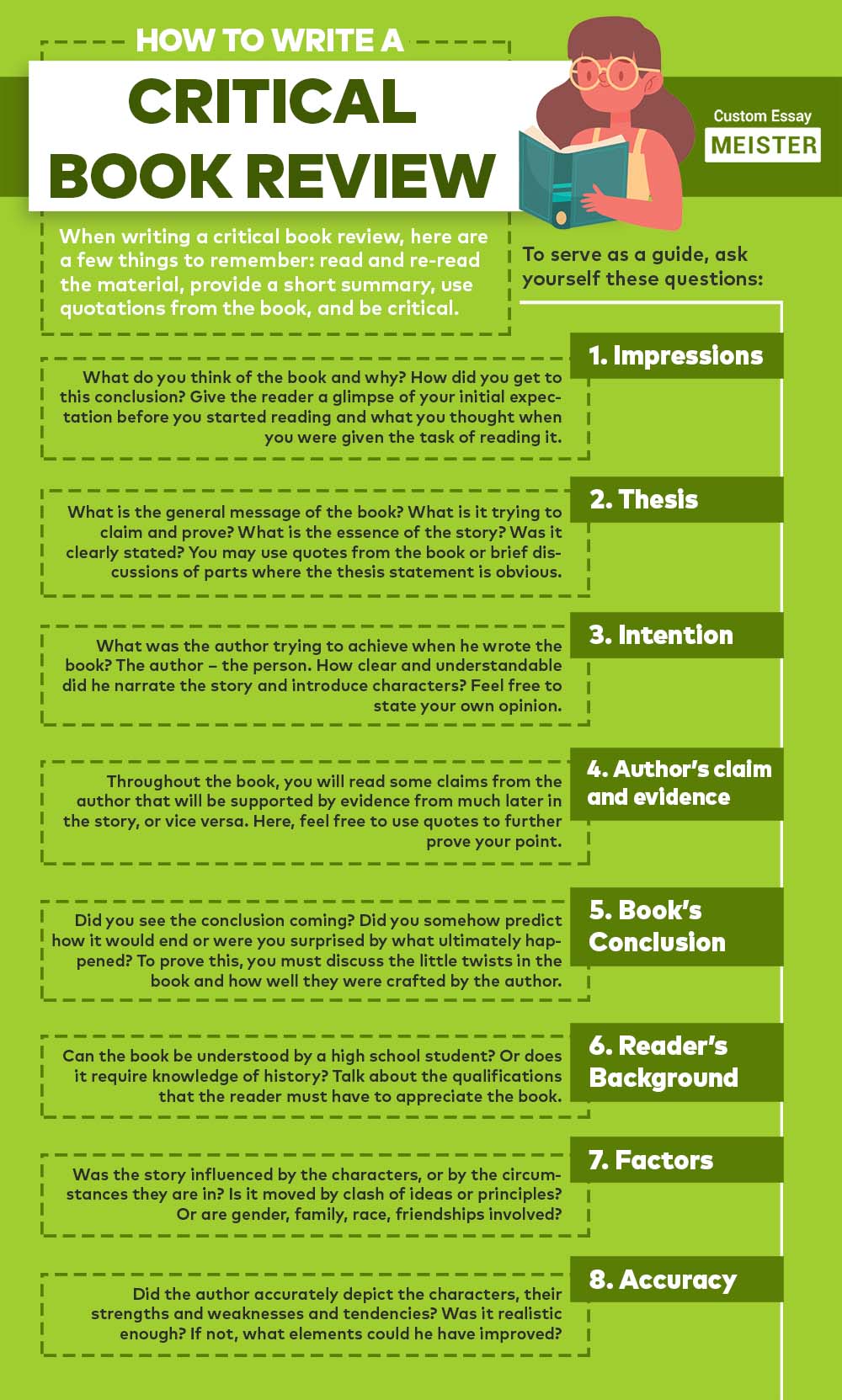Writing a critical book review involves carefully reading the book, analyzing its content and themes, and offering a thoughtful assessment of its strengths and weaknesses. Here is a step-by-step guide on how to write a critical book review:
1. Introduction: Start your review with a brief summary of the book, including the author's main argument or thesis. Provide some context about the author and the book's genre or subject matter.
2. Analysis: Analyze the book's content, themes, and structure. Consider how well the author presents their ideas, how convincing their arguments are, and whether the book is well-organized and engaging to read. Discuss the book's strengths and weaknesses in detail.
3. Evaluation: Offer your overall evaluation of the book. Consider whether the book achieves its stated goals, whether it contributes to the field of study or genre it belongs to, and whether it is a valuable addition to the existing literature. Be honest about your opinions and back them up with evidence from the book.
4. Comparison: Compare the book to other works in the same genre or on the same topic. Discuss how the book stands out from its peers, what unique perspective it offers, and how it adds to the ongoing conversation in its field.
5. Conclusion: Conclude your review by summarizing your main points and reiterating your overall evaluation of the book. Offer recommendations for who might benefit from reading the book and suggest any improvements the author could make in future works.
6. Proofread: Before submitting your review, make sure to proofread it for grammar and spelling errors. Check that your arguments are clear and well-supported, and that your review flows logically from one point to the next.
By following these steps, you can write a critical book review that provides a thorough analysis of the book and offers valuable insights for potential readers. Remember to be fair and balanced in your assessment, and to support your opinions with evidence from the text.

